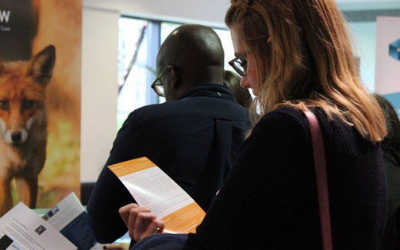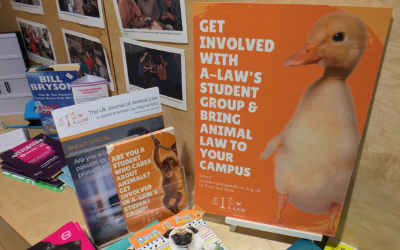Extreme conformations in dogs – July 2023 conference brings stakeholders together.
The Animal Welfare Act (AWA) is not fit for purpose in terms of safeguarding the welfare of dogs and their progeny; so was the unanimous conclusion of stakeholders attending a recent conference on the breeding and purchasing of dogs held by the All-Party Parliamentary Group on Animal Welfare (APGAW).
The event, run in conjunction with the University of Sussex and the UK Centre for Animal Law, was attended by leading members of the canine community including representatives from the Kennel Club, British Veterinary Association, Royal Veterinary College, RSPCA, Battersea Dogs Home, BSAVA, Dogs Trust and the Blue Cross in addition to experts in the field of animal law, animal welfare enforcement and animal behaviour. The purpose of the conference was to consider the scope and effectiveness of our existing regulatory toolkit[1] in regulating the breeding of dogs with extremes of conformation and to propose options for making these tools more effective and consider ways to raise public awareness about the welfare issues associated with breeding and owning dog of these types.
Currently, all licensed dog breeders in England must meet minimum standards as set out in the LAIA Regs[2]. In particular, ‘no dog may be kept for breeding if it can reasonably be expected, on the basis of its genotype, phenotype or state of health, that breeding from it could have a detrimental effect on its health or welfare or the health or welfare of its offspring’ and this includes the requirement to take all reasonable steps to only breed from dogs who are ‘in good physical and genetic health’ and ‘fit for function’[3]. However, uncertainty over how this provision should be applied, and a general lack of guidance for licensing inspectors on how to assess this, has resulted in the provisions having very limited (if any) impact and, to date, no animal welfare prosecutions for irresponsible breeding practices being brought.
Furthermore, as the LAIA Regs only apply to breeders who require a licence[4], most breeders fall outside the scope of this provision. For these unlicensed breeders, the only mechanism for regulating their activities is via the AWA itself and in particular ss.4 and 9[5]. However, whether deliberately mating two dogs with extremes of conformation, resulting in puppies born with welfare deficits, could give rise to an offence under the AWA is a moot point. This would require a duty under the Act to be owed not only to the breeding dogs but also to their future progeny; something that is currently expressly excluded from the scope of the Act[6] . Furthermore, even if it could be argued that the Act covers progeny, there are significant difficulties surrounding causation; not least in determining when the offence is committed. DEFRA has previously suggested that, in their view, progeny IS covered by the AWA however, in view of the wording of s.1(2), it is difficult to find support for this and to foresee how such an argument could stand up to the rigours of a criminal prosecution – which presumably is why, to date, none have been brought. There is however the ability for amendments to be made to the AWA[7] and, whilst all stakeholders agreed that there is currently little prospect of a successful prosecution in respect of breeding dogs with extremes of conformation, with sufficient amendment, the AWA could provide a robust mechanism for advancing animal welfare in this area.
In addition, a review of the LAIA Regs[8] to bring more breeders under the requirement to have a licence, together with the provision of additional guidance in the form of a CoP on breeding, would be a significant step forward; not only for licensing inspectors in implementing and enforcing the Regs but also for breeders in helping them to better understand their obligations, and to vets in advising their clients. Pivotal to this guidance is fostering an understanding of what amounts to responsible and irresponsible breeding. In this regard, Dr Dan O’Neill (Associate Professor of Companion Animal Epidemiology, RVC) provided an outline of a proposal to enhance and support existing regulations by the introduction of an Innate Health Assessment (IHA) to be carried out on breeding dogs prior to mating and in order to assess their suitability to breed and which is capable of being utilised not only by the veterinary profession but also by licensing inspectors and breeders. The Innate Health Assessment was unanimously accepted by all stakeholders as having merit and as being a concept which should be developed further in collaboration with representatives from across the sector.
Finally, irrespective of how robust the regulatory toolkit is, there was universal agreement that raising public awareness of the welfare implications of breeding dogs with extreme conformation is vital if real progress in this area is to be achieved. The continuing upward trend for extreme conformation dogs (fostered by social media and exacerbated by images of extreme conformation dogs being used by companies to market their products) drives demand for breeders to continue to breed in this way. We must find ways to address this and get the public onboard with this issue if we are to have any prospect of influencing the way that dogs are bred and safeguarding the health and welfare of future generations of dogs.
[1] As provided by the Animal Welfare Act 2006 (AWA) and the Animal Welfare (Licensing of Activities Involving Animals)(England) Regs 2018 (LAIAR).
[2] Animal Welfare (Licensing of Activities Involving Animals)(England) Regs 2018 (LAIAR).
[3] Sched 6, 6(5) LAIAR 2018.
[4] Sched 1, 8(a & b) of LAIAR 2018 states that only those people who breed 3 or more litters in any twelve month period and/ or breed and advertise dogs for sale in the course of a business are required to have a licence.
[5] S.4 of the AWA states that a person commits an offence if any act, or failure to act, causes an animal to experience unnecessary suffering and if they knew, or ought to have known, that this would result. S.9 of the AWA requires those who are in control of an animal to take such steps as are reasonably necessary to ensure the welfare needs of that animal are met – this includes the need to be able to exhibit normal behaviours and the need to be protected from pain, suffering, injury and disease.
[6] S.1(2) AWA 2006 – this expressly excludes protection under the Act from being extended to cover any animal in its foetal or embryonic stage
[7] S.1(3) of the AWA states that the appropriate national authority can extend protection under the Act to: ‘any animal from such earlier stage of its development as may be specified’. S.12 allows for the national authority to pass any regulations that they see fit to ‘promote the welfare of animals or their progeny’.
[8] A review of LAIAR is currently underway and due to be completed by the end of this year.






